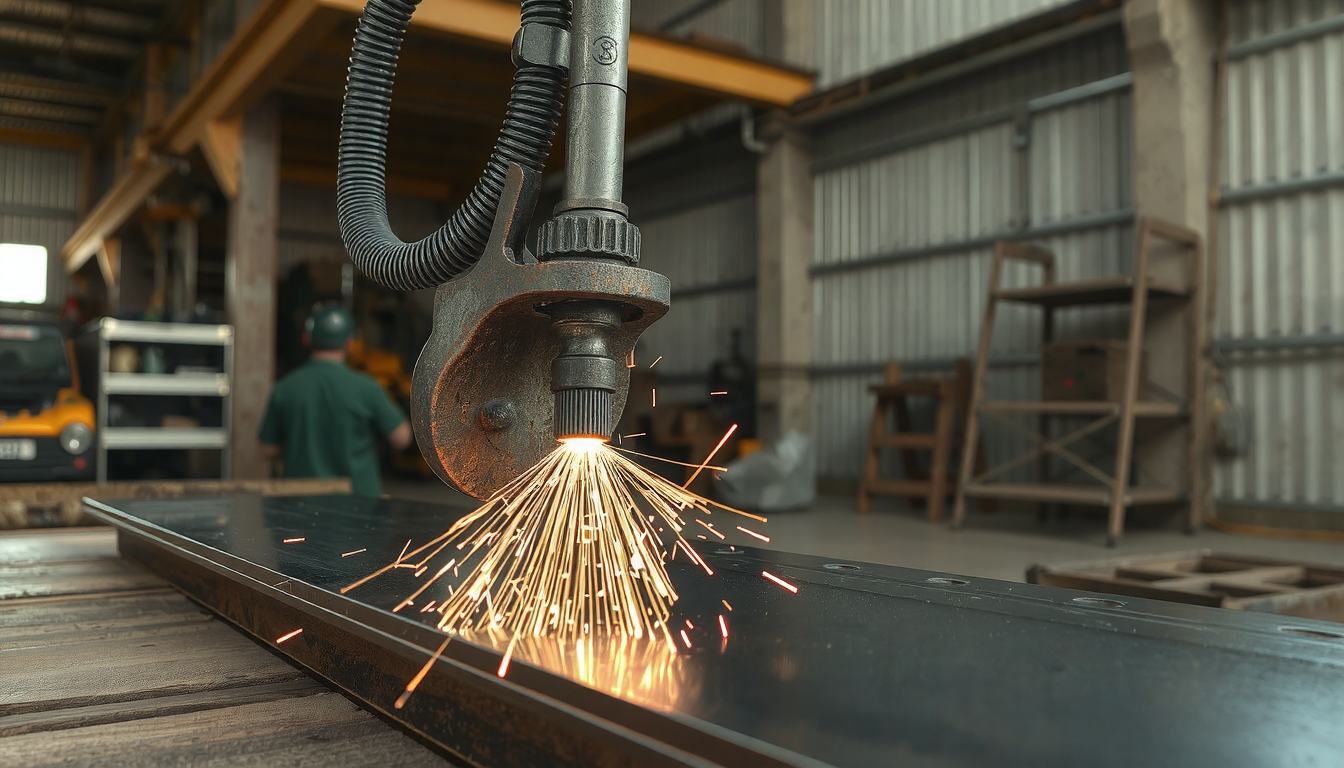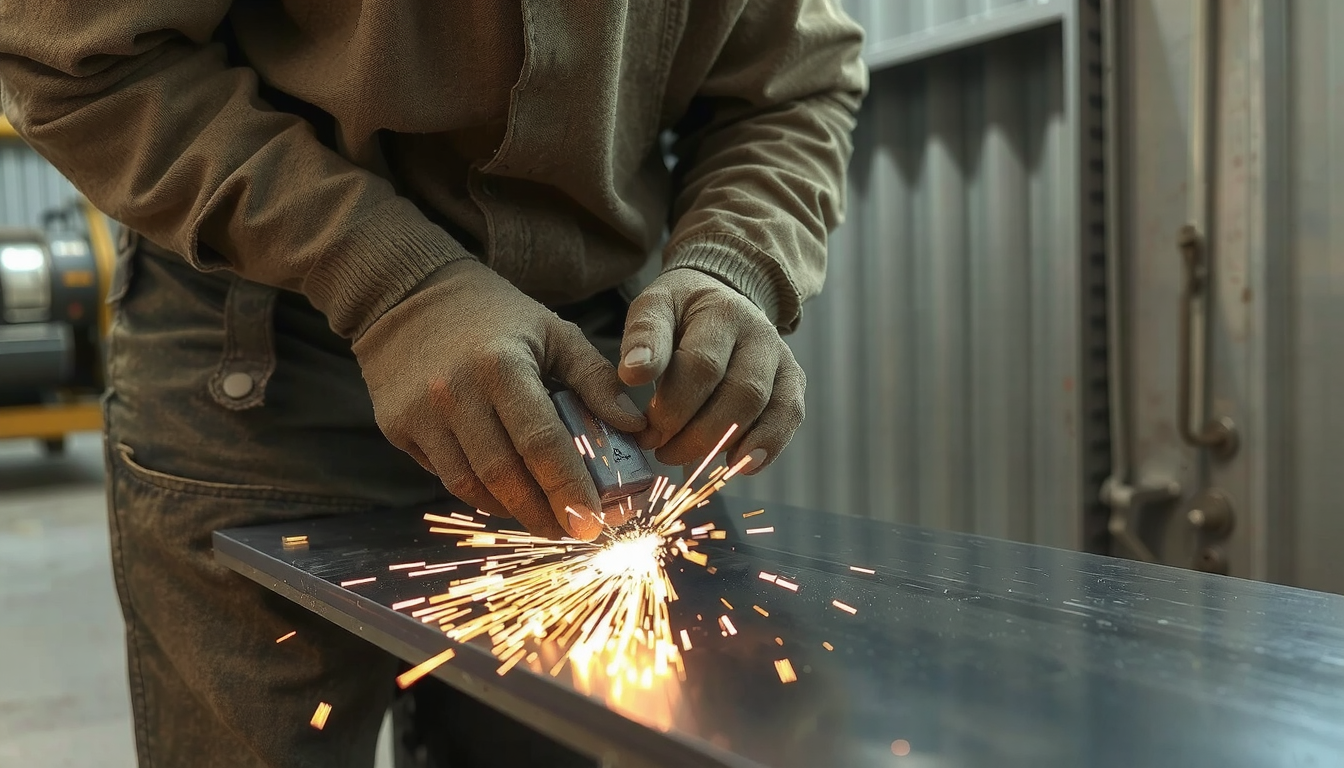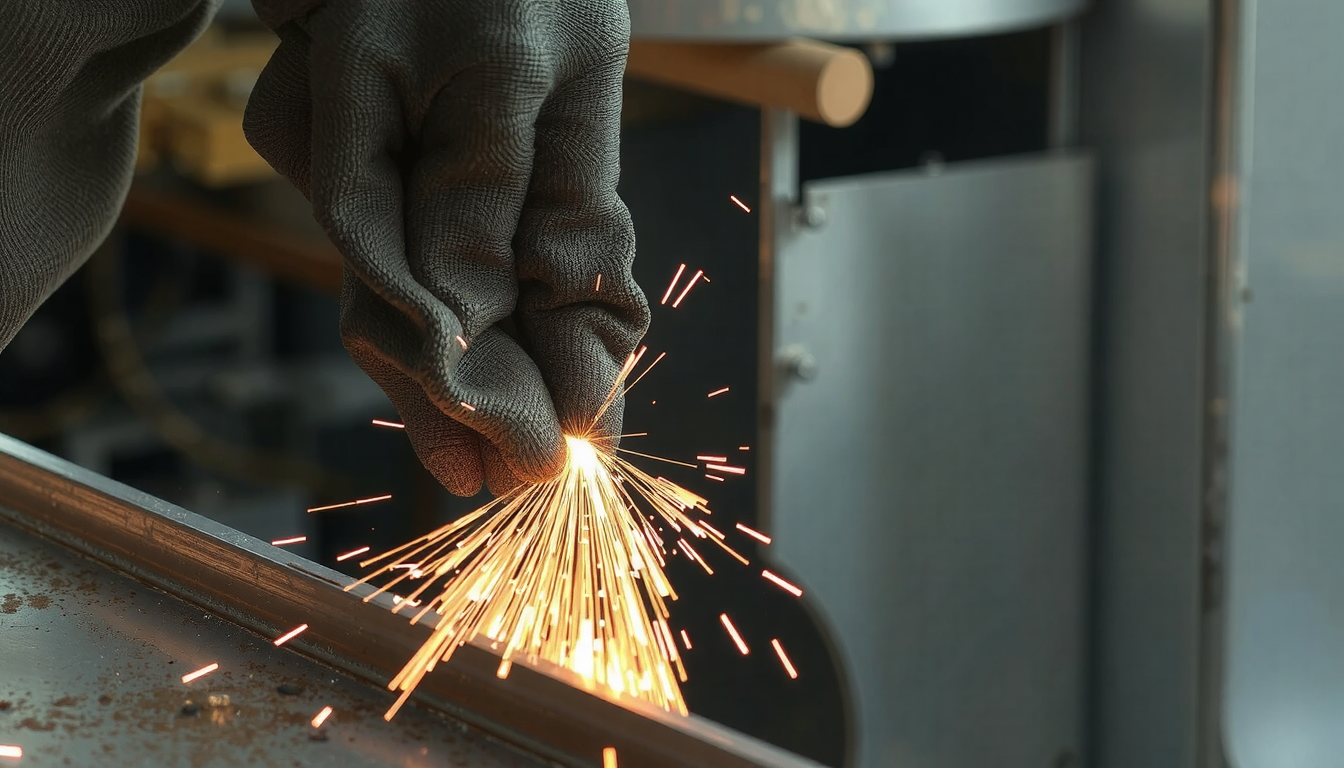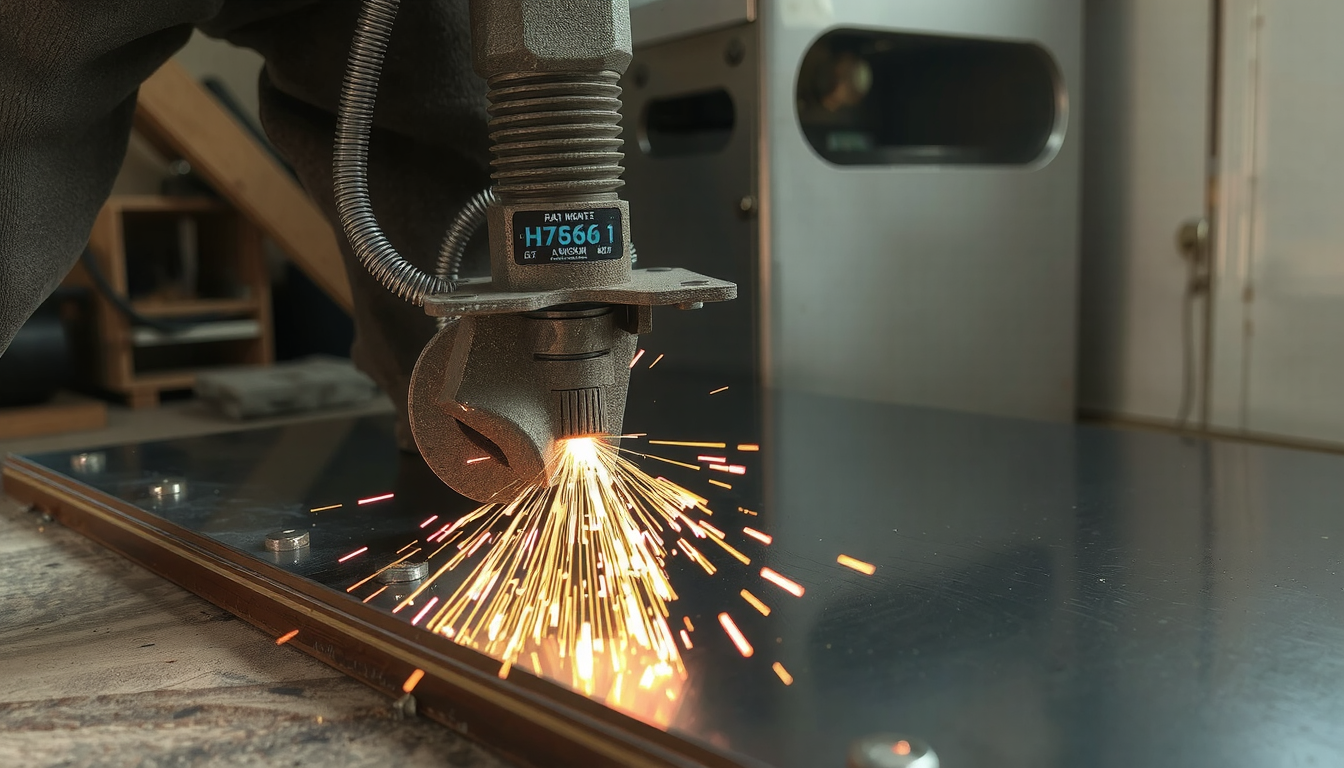A lot of creative and repair tasks are open to you by learning to bend sheet metal. You can, for example, make custom brackets, fix panels, or design and build your own art. The good news is simple. To start, you do not need a tool-filled factory.

This guide is a comprehensive overview of different methods. We will be covering every aspect from the use of a simple bench vise to a professional press brake. In addition, we will mention safety measures, the underlying principles of bending, and specific methods for different levels of experience.
Moreover, we look at regular issues and their solutions. To sum up, we suggest that you know the right time to involve a professional in the project. Whether for a one-time project or advanced manufacturing, understanding these techniques is key. At Mekalite, we see the results of expert fabrication every day.
Safety First: Core Precautions to Be Heeded when Bending Sheet Metal
Before undertaking bending, we need to discuss safety. Bending sheet metal can be hazardous due to the sharp edges you create when cutting the metal.
Taking a few simple steps can prevent most injuries. Safety should always be your priority. Keeping the workspace clean and wearing the right protective gear is just as vital as knowing the bending technique. Here are the utmost rules for you to follow when you bend sheet metal.
- Use Appropriate PPE: Always put on cut-resistant gloves, safety goggles, and sturdy, closed-toe shoes to protect your hands, eyes, and feet respectively.
- Remove Sharp Edges: Before you bend, use a file or a tool to smooth any sharp edges or burrs. This makes the metal safer to handle. It can also help prevent cracks from starting.
- Fix Your Workpiece: Your metal sheet must be held firm. Use a vise or clamps to lock it in place. A slipping workpiece can ruin your bend and cause injury.
- Controlled Force: Apply pressure slowly and evenly. Uncontrolled fast motions are dangerous. They can cause the metal to move, break, or slip from your grasp without warning.
- Watch Your Fingers: Always be conscious of your finger positions. Pinch points are common between the metal, your tools, and the vise.
The Basics: The Scientific Principles Behind an Excellent Bend
It is worth knowing the basic concepts if you want to be a professional in bending sheet metal. Understanding why metal behaves the way it does will help you get clean, accurate bends. It makes you a professional and not just someone who is following the steps that are given.
When you bend a piece of metal, the material on the outside of the bend stretches. The material on the inside of the bend gets squeezed together. These forces are at the center of every bend you will make.
Bend Allowance and Bend Deduction
When you bend a flat sheet, its length changes because the material stretches. Bend allowance is the extra length you need to add to your flat pattern. This will help you to get the correct size after bending.
Bend deduction is the opposite of this. It is the amount of length you subtract from the total length of the flanges to determine the correct size of the flat pattern. For simple DIY projects, you may not need complex math. But, knowing that the metal stretches is the best way to get accurate parts.
The Main Factor: Bend Radius

The bend radius of the inside corner is the curve on the inside of the bent corner. It is one of the critical factors that will drive the success of the bend. A very common mistake is trying to make a sharp, zero-radius corner. In almost all cases, this will cause the metal to crack on the outside of the bend.
Each material has a minimum bend radius which is the smallest it can be bent without breaking. The starting point for the minimum inside bend radius is generally equal to or greater than the thickness of the material itself. Harder or thicker materials, on the other hand, may require a larger radius to avoid cracks. Knowing this one key point is part of a basic guide to avoiding cracks during bending.
Fighting against Springback
Do you recall the time you bent a metal sheet to 90 degrees? Did it, however, go back to 92 degrees when you let go of it? That is called springback. This is the way metal has a natural tendency to try to return to its original flat shape.
In order to get your angle correctly, you have to over-bend the piece slightly. For example, if you want a 90-degree angle, you might need to bend it to 93 degrees. The amount of springback depends on the type of metal, its thickness, and the bend radius being used. The best way to find out for sure is to perform a test bend with a scrap piece of the same material.
The Best-Bending Methods to Follow: Good, Better, Best
There are many ways to bend sheet metal. The method you choose should be appropriate for the type of project you are executing, your budget, and your available tools. We have arranged them in three groups: Good, Better, and Best. This structure will make it easy for you to choose the right method for your application.
Good: The DIY Way with Common Tools
This is the best option to start with. It is suitable for those who want to make only a simple or low-precision bend where they need only one or two parts. Using common tools that you probably have in your workshop, you can achieve good results. This is a frequently employed method for farm repairs and hobby projects that usually use commonly found tools such as angle iron and clamps.
Tools Needed:
* A strong bench vise
* Two pieces of hardwood or steel angle iron
* A soft-face hammer or a regular hammer with a wood block
* C-clamps or other strong clamps
* A marker and a square
Here is our step-by-step guide for this simple way for how to bend metal sheet:
-
Mark Your Bend Line: Use your square and a permanent marker to draw a clear, straight line on the metal. Draw the line where you want the bend to be. A good line is key for a good bend.
-
Create Your “Makeshift Brake”: Place your sheet metal between the two pieces of wood or angle iron. Clamp this entire “sandwich” tightly in your bench vise. Line up your marked line perfectly with the top edge of your blocks.
-
We can’t stress this enough: make sure everything is clamped TIGHTLY. Any wobble will result in a curved, unprofessional bend. The angle iron provides a sharp, strong edge for a crisp fold.

-
Start the Bend: First, apply slow, gradual pressure with your hands. Push the part of the sheet sticking out over the edge of your makeshift brake. Bend it as far as you can by hand.
-
For a sharper angle or with tougher metal, you’ll need a hammer. Place a block of wood over the bend line to protect the metal’s surface. Gently tap along the entire bend line with your hammer. Move back and forth to keep the bend even.
-
Check and Adjust: Remove the part from the vise and check the angle with your square. If you need to adjust it, you can clamp it back in and make small changes. Don’t forget to account for springback by bending it a little past your target angle.
Better: Employing a Benchtop Brake for Precision
If you bend metal sheets often, you might want to invest your money in a benchtop brake. This machine is designed specifically for bending sheet metal, and it performs much better than the DIY method. It is very popular with hobbyists and in small workshops.
A manual benchtop brake, known commonly as a folder, has a clamping bar that holds the metal down evenly. It also has a hinged part that you lift with a handle to create the bend. This arrangement guarantees that bending occurs under even pressure for the full bend length. This gives you a perfectly straight result every time.
It is very simple to use one. First, mark your line. Then, insert the sheet under the clamping bar. Next, line your mark up with the bending edge. After clamping it down, you just pull the handle up until you reach your desired angle. These brakes typically come with angle stops that make it easier to create multiple, identical parts. This is a big step up in precision and efficiency when you want to know how to bend metal sheet correctly.
Best: Basics Of Professional Bending Methods
For industrial production, where precision, speed, and strength are critical, fabricators use advanced machinery. Those are the steps that make complex car, airplane, and appliance parts. Familiarity with them shows you what is feasible with metal.
Here are the main professional methods for bending sheet metal.
-
V-Bending: This is the most common industrial method. It uses a machine called a press brake. The machine has a “punch” (the top tool) and a “V-die” (the bottom tool). You can find more information about the basics of V-bending to understand how it works. There are three main types:
- Air Bending: The punch presses the sheet into the V-die but does not push it all the way to the bottom. The final angle is controlled by how deep the punch goes. This method is very flexible and uses less force.
- Bottoming: The punch presses the sheet so it makes full contact with the sides of the V-die. This is more precise than air bending and reduces springback.
- Coining: This method uses extreme force. The punch stamps the metal into the die. This permanently sets the bend and almost completely eliminates springback. It thins the material at the bend and is less common today.
-
Roll Bending: This method does not produce sharp corners. Rather, it is used to create broad, gentle curves, arcs, or even entire cylinders. The machine uses three rollers to guide and bend the sheet metal as it passes through.
Common Bending Problems and Their Solutions
Even with the right practice, you might encounter some issues. Knowing how to diagnose and fix these issues will save you a lot of time and wasted material. This is a critical part of learning how to bend metal sheet effectively.

Here is a table that lists the most common problems, their likely causes, and the ways to solve them.
| Problem | Likely Cause | Решение |
|---|---|---|
| Cracking on the outside of the bend | The bend radius is too small for the material’s thickness or type. You might be bending against the material’s grain. | Increase the bend radius. A radius of at least 1x the material thickness is a good rule. For harder metals, try 2x or 3x. If possible, orient your bend line so it goes across the grain direction. |
| The final angle is incorrect | You did not account for springback. The metal naturally wants to return to its flat shape after being bent. | Over-bend the part slightly past your target angle. For example, to get a 90-degree angle, you may need to bend to 92 or 93 degrees. Always do a test bend on a scrap piece first to see how much it springs back. |
| The bend is curved, not straight | The clamping pressure was not even. The bending force was not applied evenly along the entire bend line. | Make sure your clamps are tight and spaced evenly. Use a full-length piece of angle iron to distribute pressure. When hammering, work your way along the bend line instead of focusing on one spot. |
| Distortion near the bend | Features like holes or cutouts are too close to the bend line. The stress from bending is warping these features. | Redesign the part to move holes and other features further away from the bend. A safe distance is at least 2.5 times the material thickness plus the bend radius. You can also add “bend reliefs,” which are small notches at the ends of the bend line to prevent tearing. |
DIY vs. Professional: When to Hire a Sheet Metal Fabrication Service
Learning the art of bending metal sheet at home is a valuable skill, but sometimes a project is better left to the experts. Distinguishing the cases will lead you to the best solution to meet your requirements.
Stick with DIY if:
- The project is a one-time part or a simple prototype.
- The final appearance does not need to be perfect.
- The material is thin and easy to work with, like thin aluminum or light-gauge steel.
- You have the time to experiment and enjoy the learning process.
Consider a Professional when:
- You need many identical parts with consistent quality.
- The project requires high precision and tight dimensional accuracy.
- The material is thick, hard to bend, or expensive, such as stainless steel or thick steel plate.
- The part design is complex and involves multiple bends in different directions.
For projects where structural strength is a must, engaging профессиональное изготовление листового металла services is the best choice. These experts use calibrated equipment like CNC press brakes to ensure every bend is perfect. They meet engineering standards.
Sometimes, complex assemblies also need other precision parts to fit together perfectly. This might involve components made with Услуги токарного станка с ЧПУ to ensure a flawless final product.
Conclusion: Bending Metal to Your Will
We have traveled from the basics of safety to the fine points of professional fabrication. You now have a solid foundation for how to bend metal sheet for your own projects. You know the importance of a proper bend radius. You know how to plan for springback.
You have seen how to get started with simple hand tools. You know when it might be time to invest in a benchtop brake. Most importantly, you know how to spot common problems and how to fix them.
The most critical tips to remember are simple. Always choose a large enough bend radius. Perform a test bend to account for springback. With these principles and a little practice, you will be amazed at what you can create. Mastering how to bend metal sheet unlocks endless possibilities for building, repairing, and creating.
Frequently Asked Questions (FAQ)
1. Can you bend sheet metal without heating it?
Yes, almost all sheet metal bending for thin materials is done cold. This process is called “cold forming.” Aluminum, mild steel, and stainless steel up to a certain thickness are easily bent at room temperature. Heating is usually only needed for very thick plates. It’s also needed for specific alloys to make them more bendable and prevent cracking.
2. What is the easiest metal to bend by hand?
Thin-gauge aluminum is the easiest metal to bend by hand. Alloys like 3003 or 5052 are very soft and flexible. This property, known as ductility, allows them to be shaped without much force. Thin sheets of copper are also very easy to bend by hand.
3. How do you make a 90-degree bend in sheet metal?
To get a precise 90-degree bend, you must overcome springback. This means you need to bend the metal a few degrees past 90. Perhaps bend to 92 or 95 degrees. When you release the pressure, the metal will “spring back” to a perfect 90. The exact amount of over-bend needed depends on the material, its thickness, and your tools. A quick test on a scrap piece is the best way to find the right angle.
4. What tool is best for bending sheet metal?
The “best” tool depends on the job. For professional, repeatable, and highly accurate bends, a CNC press brake is the industry standard. For a home workshop, a manual benchtop brake provides the best mix of cost and precision. For a simple, one-time bend, a sturdy bench vise combined with two pieces of angle iron is a surprisingly effective and low-cost solution.
5. How do you prevent sheet metal from cracking when you bend it?
The main way to prevent cracking is to use a large enough bend radius. A bend that is too sharp for the material’s thickness is the most common reason for failure. As a rule, the inside radius of the bend should be at least equal to the material’s thickness. Also, if the metal has a grain direction from its manufacturing, try to make your bend line across the grain, not parallel to it.

